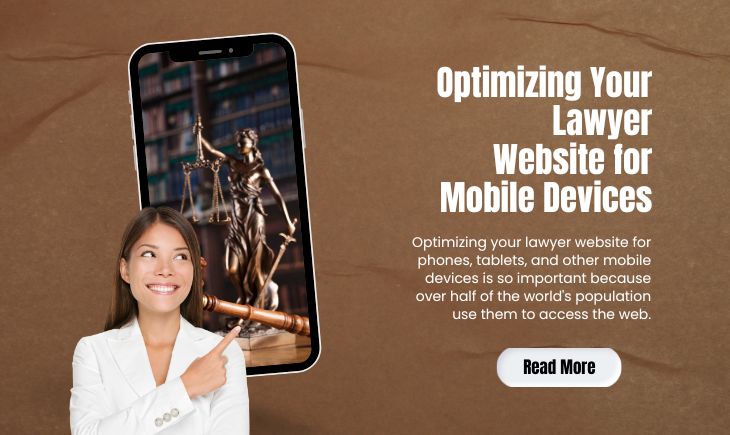Optimizing your lawyer website for mobile devices is essential in today’s digital landscape, as many people these days access the World Wide Web using their smartphones and tablets. To ensure a seamless user experience and maximize your website’s visibility, here are some critical steps to follow:
Responsive Design
Incorporate a responsive web design that adjusts to varying screen sizes and resolutions. This approach ensures your website’s layout and content adjust automatically for optimal viewing and navigation on mobile devices.
Streamline Content
Mobile users have limited screen space, so it’s crucial to prioritize and streamline your content. Condense lengthy paragraphs, use concise headings and break up text with bullet points or subheadings to enhance readability and facilitate quick scanning.
Clear Call-to-Action (CTA)
Make your CTAs prominent and easy to tap on mobile screens. Use large buttons with contrasting colors and clear text to guide users toward desired actions, such as contacting your law firm or scheduling a consultation.
Simplify Navigation
Simplify your lawyer website’s navigation menu for mobile users. Use collapsible menus, dropdowns, or hamburger icons to access essential sections quickly. Aim for three levels in your navigation hierarchy to avoid overwhelming visitors.
Optimize Page Load Speed
Mobile users have little patience for slow-loading websites. Compress images and files, minify CSS and JavaScript, and leverage caching techniques to optimize your website’s load speed. Google’s PageSpeed Insights and similar tools can help identify specific areas for improvement.
Thumb-Friendly Interactions
Consider the ergonomics of mobile devices when designing interactive elements. Ensure buttons and links are large enough to be easily tapped with a thumb or finger, and provide ample spacing between clickable elements to minimize accidental taps.
Mobile-Friendly Forms
Simplify and optimize any forms on your website for mobile use. Use autofill suggestions, minimize the required fields, and utilize dropdown menus or checkboxes instead of long text fields whenever possible. Also, ensure that form validation messages are displayed clearly.
Location and Contact Information
Make it easy for mobile users to find and contact your law firm. Display your phone number prominently, use click-to-call functionality, and include a map with directions. Consider adding a prominent “Contact Us” button throughout your mobile site.
Test Across Devices
Test your lawyer website on various mobile devices and screen sizes to ensure consistent performance and usability. Emulators, device labs, or remote testing tools can help simulate different mobile environments without physically owning every device.
Mobile SEO Optimization
Optimize your law website for mobile search engine optimization (SEO). This includes ensuring mobile-friendly design, using responsive URLs, optimizing page titles and meta descriptions, and prioritizing mobile-first indexing.
Read the related blog here: https://www.victorylawyermarketing.com/11-tips-to-mobile-optimize-your-lawyer-website/
Analyze and Iterate
Monitor your website’s mobile performance using analytics tools like Google Analytics or heat mapping tools. Analyze user behavior, bounce rates, and conversion rates to identify areas for improvement. Continuously iterate and make adjustments based on the data collected.
Conclusion
Remember, a mobile-friendly website for lawyers enhances the user experience and improves your search engine rankings. By following these optimization strategies, you can attract and engage a broader audience of potential clients accessing your law website on mobile devices.







